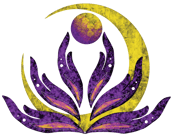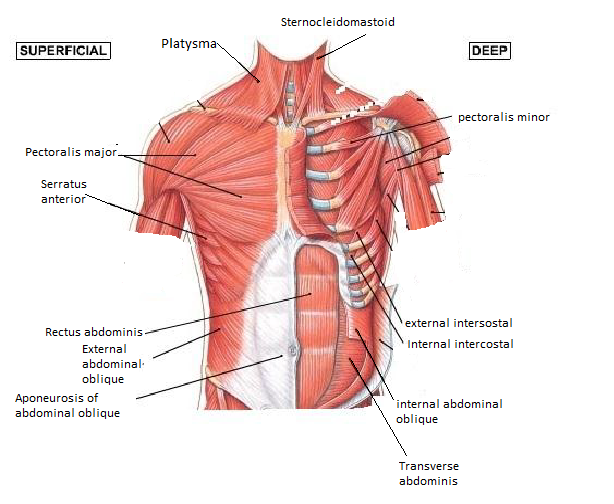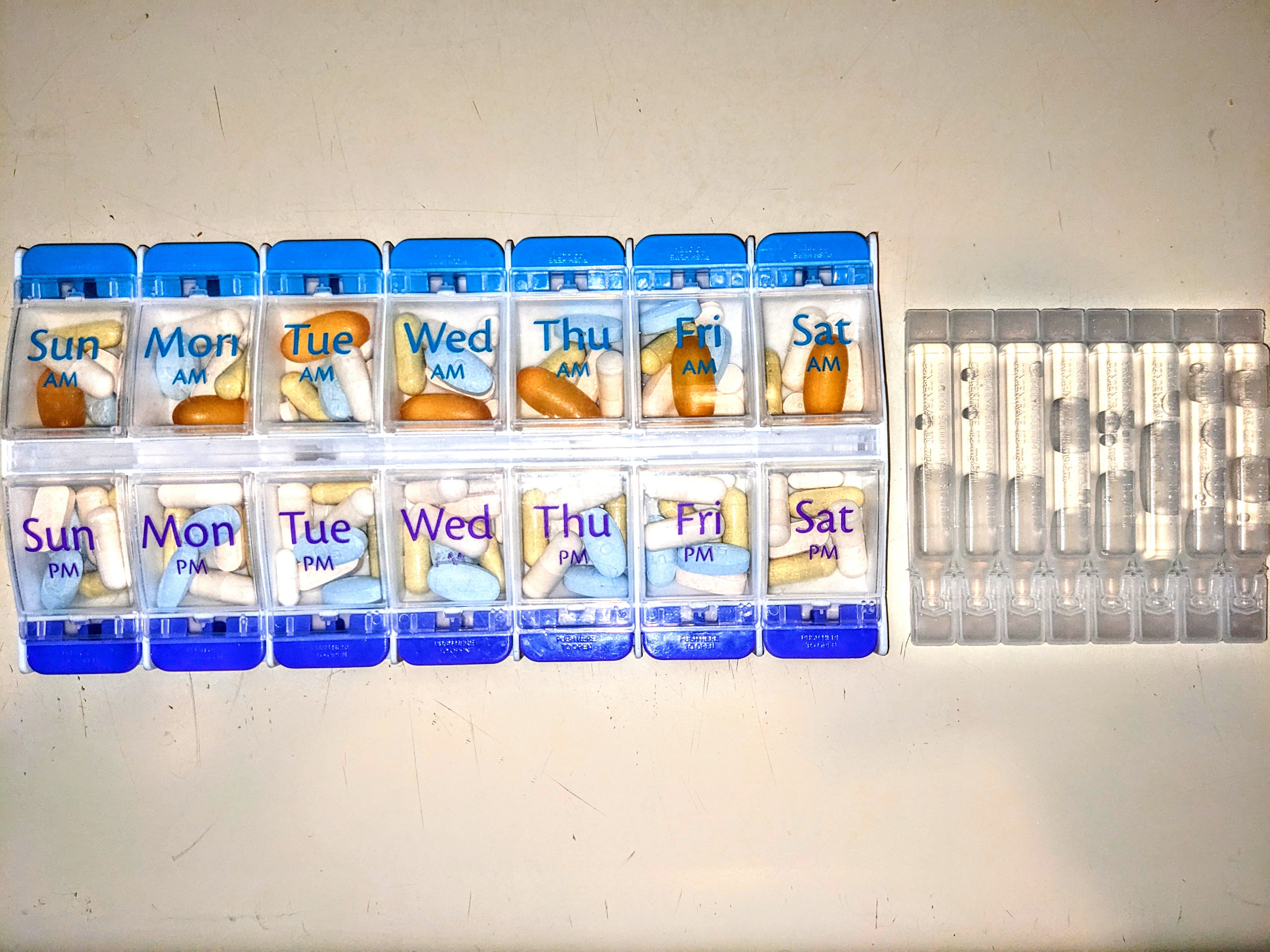Body Language: Learning to Listen
Do you know that your body is constantly trying to communicate with you?
Do you know what it is saying at this very moment… what it needs?
The Summary
The body uses a subtle language through which it relays messages to you - the Pilot. Some are shared collective signals, like pain and exhaustion, but more specific parameters like limits and imbalances will be unique to you - and will fluctuate.
It may be easy enough to pay attention to the loud, obvious alerts: hot, cold, sharp pain. Though, if you’re neurodivergent like me, sometimes you get “in the zone” and forget to stretch or use the bathroom for hours.
So what about the less disruptive cues: numbness, limited mobility, stiffness? These indicators are all too easy to ignore. And how important could they be, anyway? We may even assume that they will go away on their own. But these are often the preliminary warning signs for something more serious, if we continue to ignore them.
Stress by itself may seem harmless enough, but it has the potential to be the catalyst for life-altering health complications.
Learning how to listen to your own body could be the most important thing you ever do. These more nuanced messages require a continued practice of self-awareness and checking in to interpret.
The Signals
- Numbness
-
- Sensation: lack of feeling, tingling, pins and needles, often in extremities like fingers and toes
- Potential Risk: a pinched nerve caused by a knot or musculoskeletal structural imbalance, nerve damage, or an underlying condition - if left untreated, numbness can lead to permanent nerve damage
- Soreness/Ache (vs pain)
- Sensation: tender to touch, slight burning, fatigue, dull, lasts 1-3 days
- Potential Risk: reaction to exercise or using muscles in new ways; overuse
- Pain
-
- Sensation: sharp, stabbing, hot, sudden, limits movement, doesn’t stop when resting, lasts more than 3 days
- Potential Risk: muscle tear or strain, other injury, structural imbalance = a more serious problem that may need further testing & chiropractic or doctor assessment
- Fatigue
-
- Sensation: Constant exhaustion, lack of desire to do anything, burnout
- Potential Risk: Nutrient or sleep deficiency, dietary imbalances, underlying condition, lack of movement, deregulated nervous system
- Stress
- Sensation: Tight or elevated shoulders, difficulty breathing, feeling heavy, overwhelmed, clenched or grinding jaw
- Potential Risk: Physical changes in the brain, weakened immune system, increasing other health risks such as high blood pressure, heart disease, stroke, obesity and diabetes
The Dilemma
A metaphor: you don’t notice the small bundle of hairs that float down your shower drain, catching somewhere out of sight. It goes undetected for weeks or months, but slowly collects more debris until the drain no longer functions as it was intended to. This only becomes a problem you actually have to deal with when your nice hot shower is suddenly interrupted by several inches of standing water.
It is the same with a knot, injury, or imbalance in the musculo-skeletal tissues: your body is actively reconfiguring itself around this problem, in order to continue functioning, but eventually this will throw your whole body off balance. Your meatsuit is meant to be a well-oiled machine, but just like a clock or a car, one kink in the mechanism can make the whole thing malfunction.
A truth I’ve really come to understand in the past few years while working with my clients is that the body has adapted around your *initial* injuries. The body remembers every incident. As we unravel the more recent issues, we work in reverse chronological order of when the injuries occurred. I myself have been doing this with massage, chiropractic adjustments, and physical therapy, and my healing team has been able to address a majority of my injuries. We’re now addressing the misalignments I was born with and the injuries incurred in childhood. So many of my problem areas were compensation for or around these.
"Everything really is connected" and one small daily habit or repetitive action can create a chain reaction that can take several massage sessions to release. If it takes years to create an imbalance, it likely isn’t going to be undone in one hour of massage. Our goal in bodywork is to get you to a maintenance level, but so many folks have issues that they’re completely unaware of. After nearly every session, I’m told I found places that they didn’t even know were a problem spot. This is so common because tuning into our bodies is actually the *opposite* of what our culture tells us to do.
In Practice
A real life example I see often: You never got around to ensuring that your home office is ergonomically efficient, so even though your feet are aligned straight ahead, your torso is twisting at an angle to see your second screen. This creates tension in the side of the spine where it is constantly twisting, resulting in a cross body zig zag pattern affecting the evenness of your shoulders. A sign could be numbness or tingling in your mid back or fingertips, or perhaps difficulty bending over or extending your arms fully. Often, the place we feel the discomfort is merely the part of the troubled area we move the most, or are most cognizant of, but it is not the source of the problem. The “standing water moment” could be your inability to type at your desk without discomfort in your wrists or hands, directly impacting your productivity, which we all know is our true measure of health… (insert raised eyebrow here)
Soapbox Alert: Capitalism!
Americans are notorious for ignoring pain, dysfunction, or health issues, until those issues directly affect our ability to work (i.e. to survive). This is likely equal parts due to a lack of education around body awareness from a young age, a deeply flawed and prohibitively expensive health care system, and capitalism. We live in a culture that only values us for our level of productivity and does not accommodate for our humanity.
Also, up until recently, “self-care” has been viewed as something for only rich people or for pampering yourself or loved ones on special occasions. Not the thing it actually is, which is a necessity.
One of the biggest positives to come from the pandemic is that we are finally learning the value of self-care, rest, and not over-committing ourselves to the point of burnout. There is still work to be done in transitioning mainstream culture from the idea that self-care is a spa day, consuming mass quantities of chocolate, or going on a vacation (though I will argue that these are all good things we deserve as well) when really, it is learning how to communicate with our own hearts, minds, and bodies to ask ourselves what we need, in this moment, to be at peace and to feel good.
The Science
I would be remiss in not including an important scientific factor: your nervous system. Some of us are still in survival mode from difficult things we’ve gone through, which can have a long term effect on the way our body communicates (or doesn’t). Especially if you haven’t had access to therapy, had the chance to take a break from a stressful career, or are constantly taking care of others with little time to tend to your own calm.
Your Autonomic Nervous System is what governs many of your unconscious, or subconscious, operating systems, including breathing, digestion, heartbeat, and blood flow. You would be astounded by how much of an impact the cadence and depth of your breathing has on the rest of your body. Short, shallow breathing tells your body to be prepared for running if needed: “Fight or Flight”. Slow, deep, rhythmic breathing encourages the “Rest and Digest” parasympathetic nervous system, which is the same place you’re floating in at the end of our massages.
I could spend an entire separate blog on the nervous system, but for now, I’ll refer to others.
For an 8 minute explanation, check out this video!
If you’ve been in pain or distress for an extended time or recently experienced psychological or physical trauma, the messages from the body may be pretty convoluted. You may be in a defensive state, trying to protect yourself from further injury or threat, and may not even know it.
If this is the case, how do we recognize when something is starting to go wrong? How do we learn to listen to the quiet messages instead of only tuning into when there are loud, “angry” ones - when our bodies feel like they are yelling at us?
Last year I taught a partner massage workshop to a lovely duo who continued to express their surprise at how very subtle the language of listening to the body can be. Learning to decipher which shift in muscle tissue indicates a release takes patience, fine-tuned focus, and practice. I remind myself and others that massage isn’t about telling the body what we want it to do; it is a gentle way of asking what the body needs and then creating support and space for the body to do its own work.
I am merely a facilitator for healing. The true healer is the body itself. Often, it already knows what it needs better than I do.
Being Able-Bodied is Temporary
I want to take a moment to touch on how much our bodies change throughout our lifetime. Whether through aging, injury, illness, stress, or some other factor outside of our control, there may (will) come a time when what used to work no longer does and you are forced to re-navigate your own flesh chassis. I truly believe that being able-bodied is temporary. More on that in another blog.
If, like me, you have recently experienced a dramatic shift to your health, then you already know what it is like to grieve the person you used to be and were building a life for, in exchange for a new version of reality. Most of my skills around listening to my body were born from my despair. I couldn’t run or dance or do the things that normally brought me peace and joy, so I had to create a whole new vocabulary for my self-care. It’s taken a lot of time, tracking, discipline, and starting again after falling off of the commitment wagon.
Learning to listen to the body is not an easy practice to start or maintain, but it’s so very worth it, especially for a time ahead when it is no longer optional for you. I had to learn the hard way. Maybe you did too. My hope for this blog is to tell you that you're not alone and to encourage you to dedicate time and effort towards this most important practice.
The Solutions
Here are some ways you can tune in to your body and measure movement, discomfort, functionality, and ease.
- Body Scan
You don’t have to use a specific method for listening to your body, but a body scan is a well-known approach. I recommend trying to spend 5-10 minutes a day sitting quietly, either still or with gentle movement, and turning your focus inward.
Check back soon for a 5 Minute Body Scan video I'm working on!
- Range of Motion / Movement Limitations
Try taking a moment to move each body part through its full range of motion. If you’re not sure what a full movement for a body part looks like, feel free to ask me at your next appointment.
When you find spots that are limited, you can search for yoga sequences that target those muscles to help lengthen and ultimately strengthen these areas. I’ll be adding short, accessible videos to my YouTube channel, or you can check out Yoga with Adrien for a large library of free yoga video options.
- Bodywork / Chiropractic / Massage / Physical Therapy
It takes a village! Creating a team of professionals with the training and tools to help you learn what’s happening in your body is invaluable. I’ve been an LMT since 2010 but I still learn something new about my body every time I have a physical therapy session. The body requires maintenance, just like your car, so receiving massage, chiro, and pt are things everyone, regardless of physical condition or training, can benefit from.
I’ll take this a step further and include talk therapy. In the same way that a doctor receives special training to know how to diagnose what’s happening in the body, therapists have a whole spectrum of tools and skills to help you address what’s happening in your mind and heart. I firmly believe everyone can benefit from therapy. I am always so much more at peace with routine therapy sessions in my schedule.
If you need any help finding a provider, feel free to reach out! I’m happy to refer!
- Tracking Your Symptoms
This is, of course, optional and may be difficult for some. It requires a daily check-in (that’s kind of the point of this whole blog though, ya know?) and making time to log info.
I personally use the free version of the Bearable app to track my pain levels, mood, symptoms, diet, exercise, daily activities, etc. I find it very helpful to look back and see which things caused me to feel good and which resulted in pain, fatigue, and other negative outcomes. You can create a journal or spreadsheet for tracking these as well, whatever approach works best for your brain!
Factors to Track
- Knowing when to rest vs workout – this takes time, trial, and error. Because of my immune conditions, my limits fluctuate - yours might too. But going back to see what I did on the days that were too much helps me to renegotiate my movement and exercise expectations to create a more sustainable routine.
- Recognizing new symptoms – this is so important. Tracking when problems first begin and the activities you engage in surrounding their onset can help you, and your care team, to identify possible causes or sources.
- Food reactions – you’d be surprised how many body issues are caused by food intolerance. Ask me about it sometime, or read my other blogs, or check out this article.
- Sleep quality – “If you're sleep deficient, you may have trouble making decisions, solving problems, controlling your emotions and behavior, and coping with change.”
- Water goals – have you ever forgotten about a plant for 2 months and then given it water and watched it immediately perk back up? There is a saying: “Humans are just plants with more complicated emotions.” The suggested amount of daily water is half of your weight in ounces.
* Disclaimer: This blog post is not intended to replace the advice of a medical professional. The above information should not be used to diagnose, treat, or prevent any disease or medical condition. Please consult your doctor before making any changes to your diet, sleep methods, daily activity, or fitness routine. Kismet Healing Arts assumes no responsibility for any personal injury or damage sustained by any recommendations, opinions, or advice given in this article.



